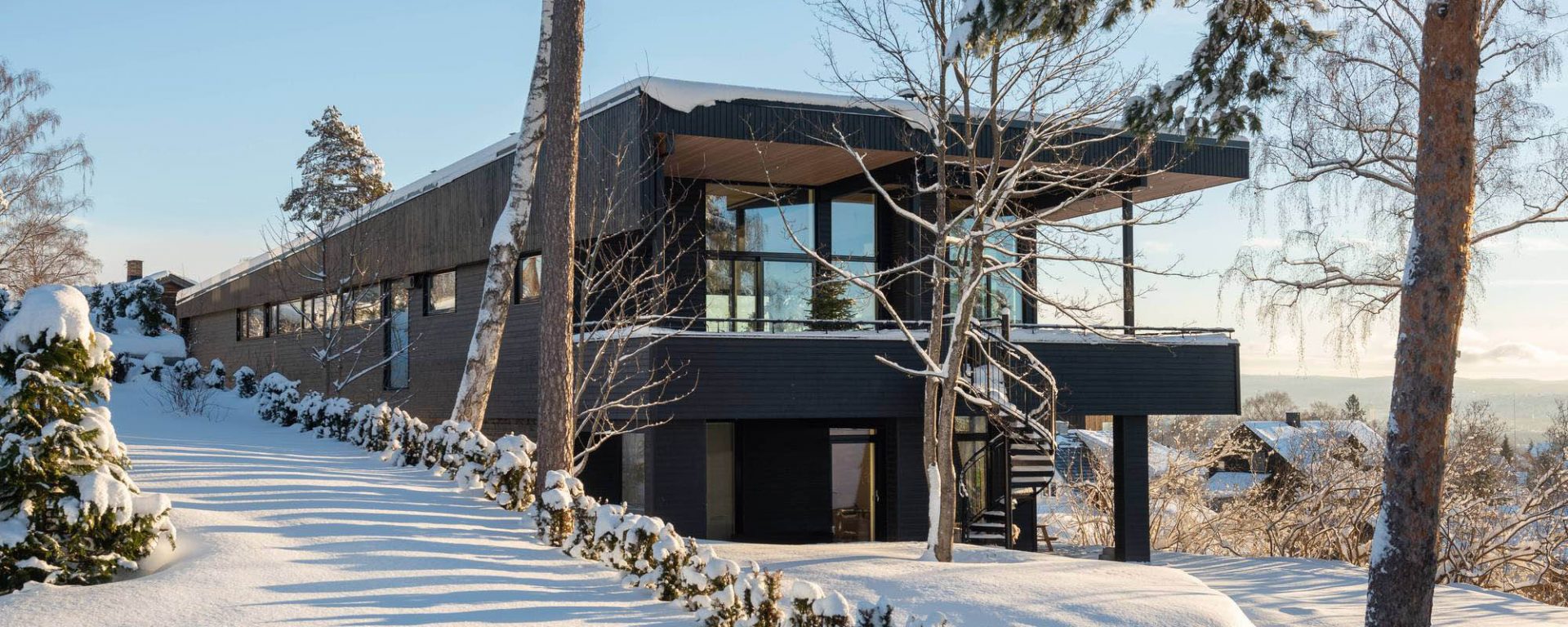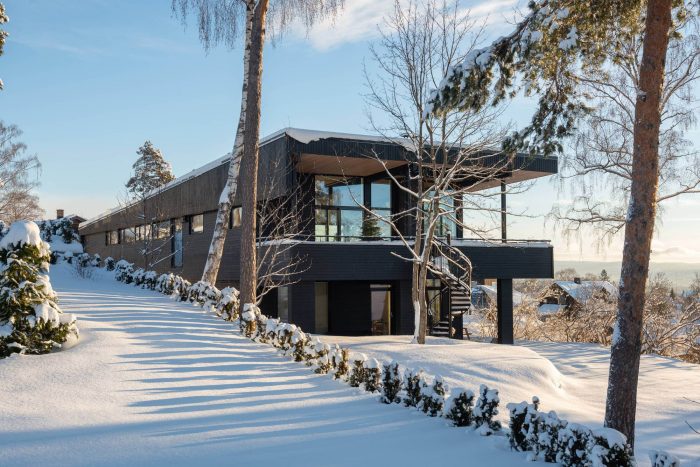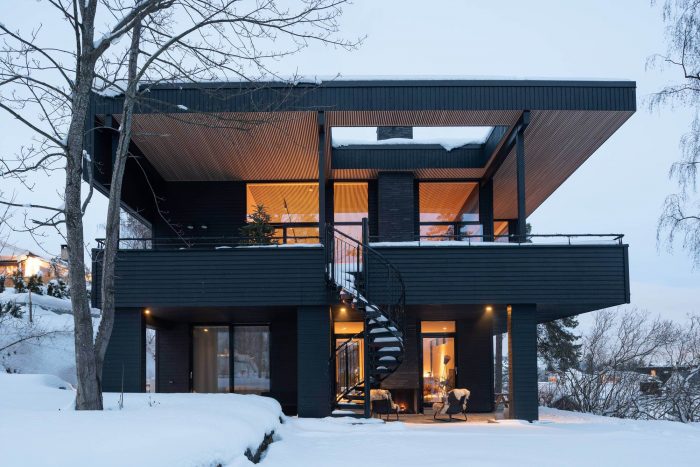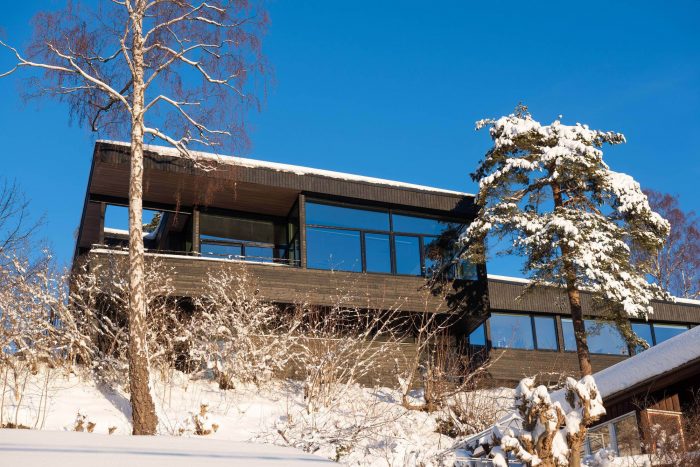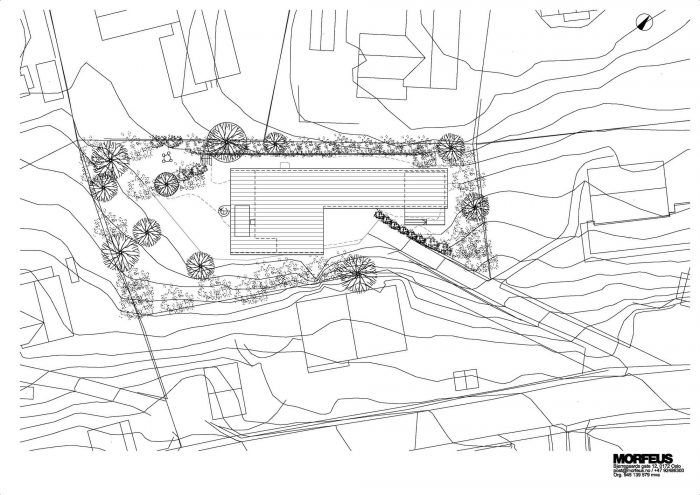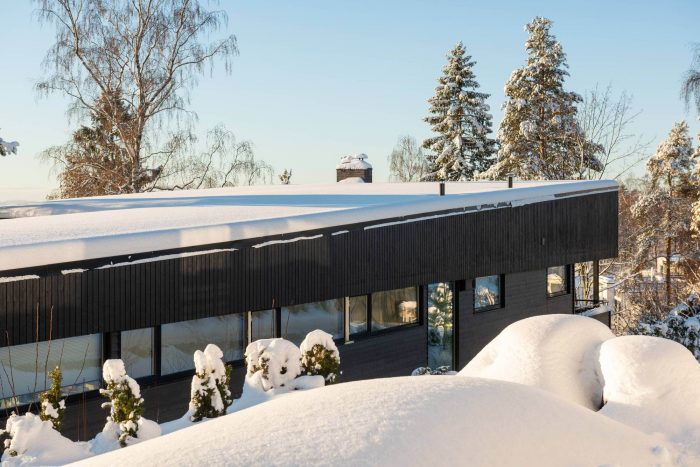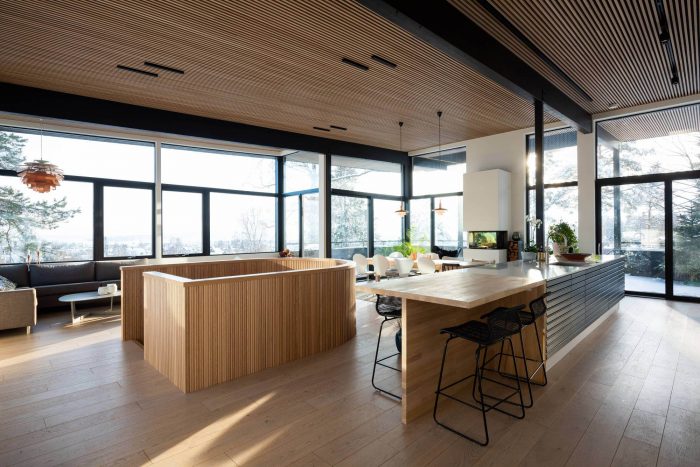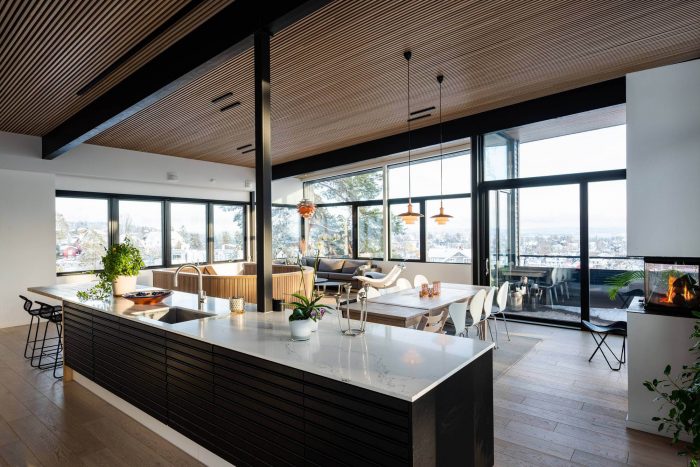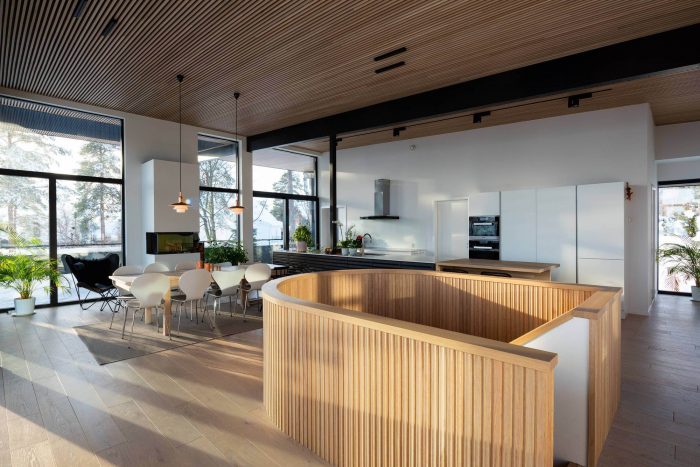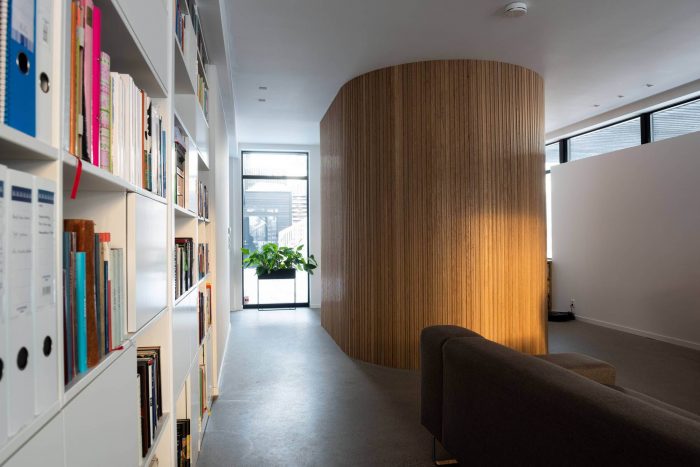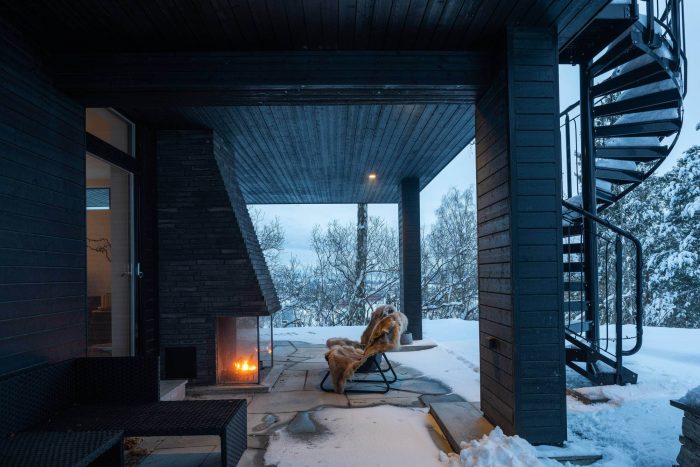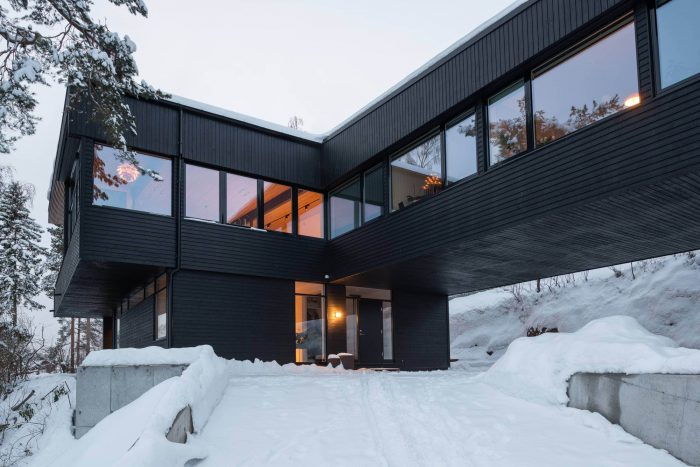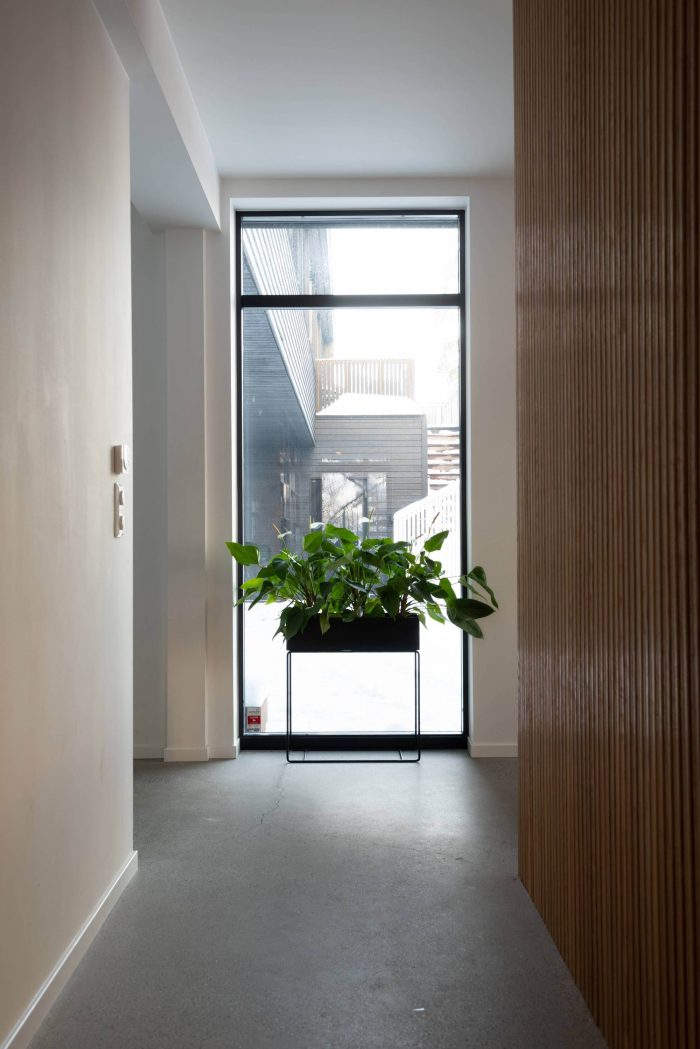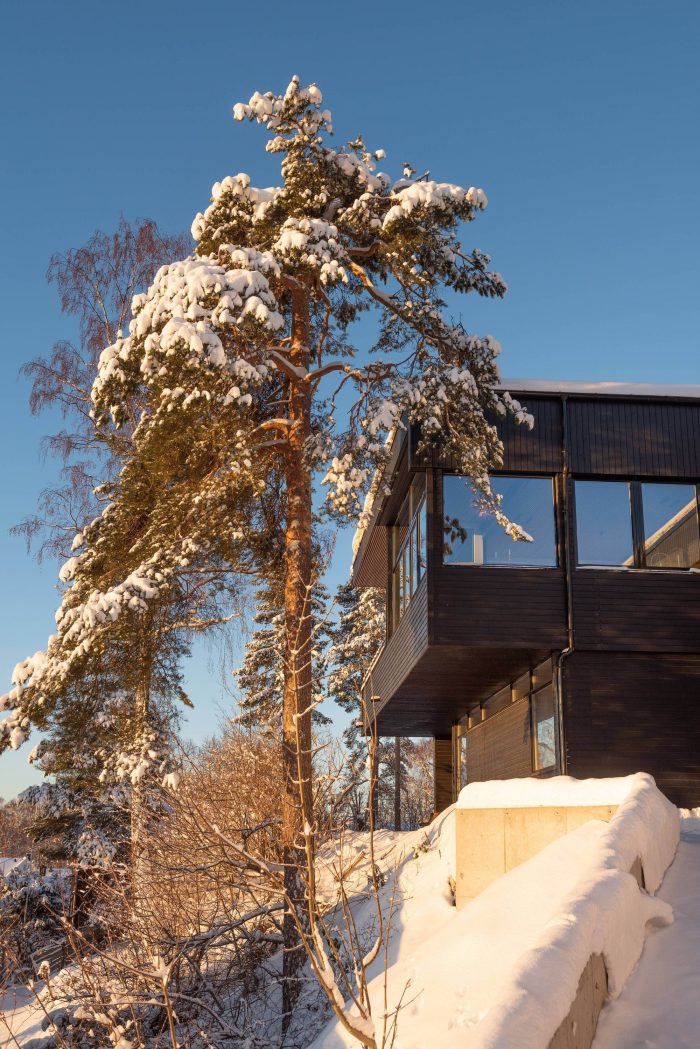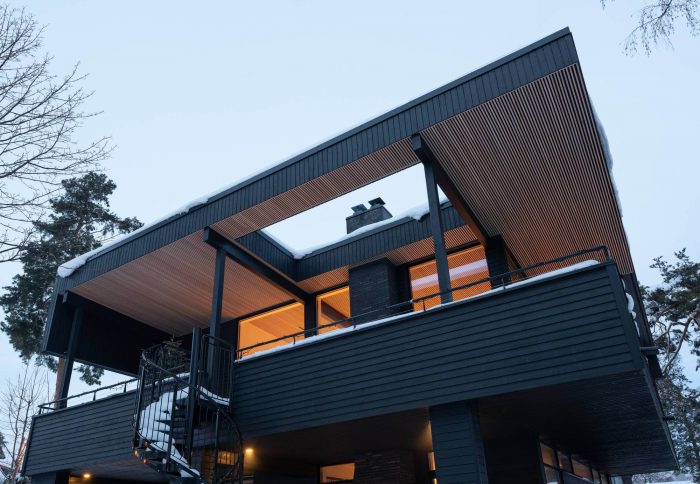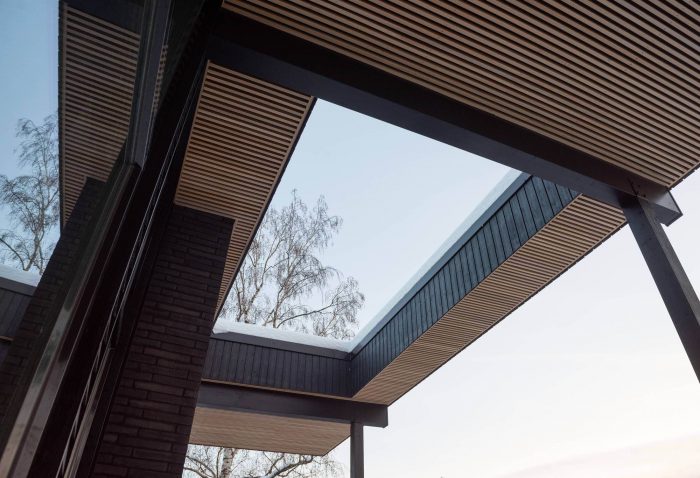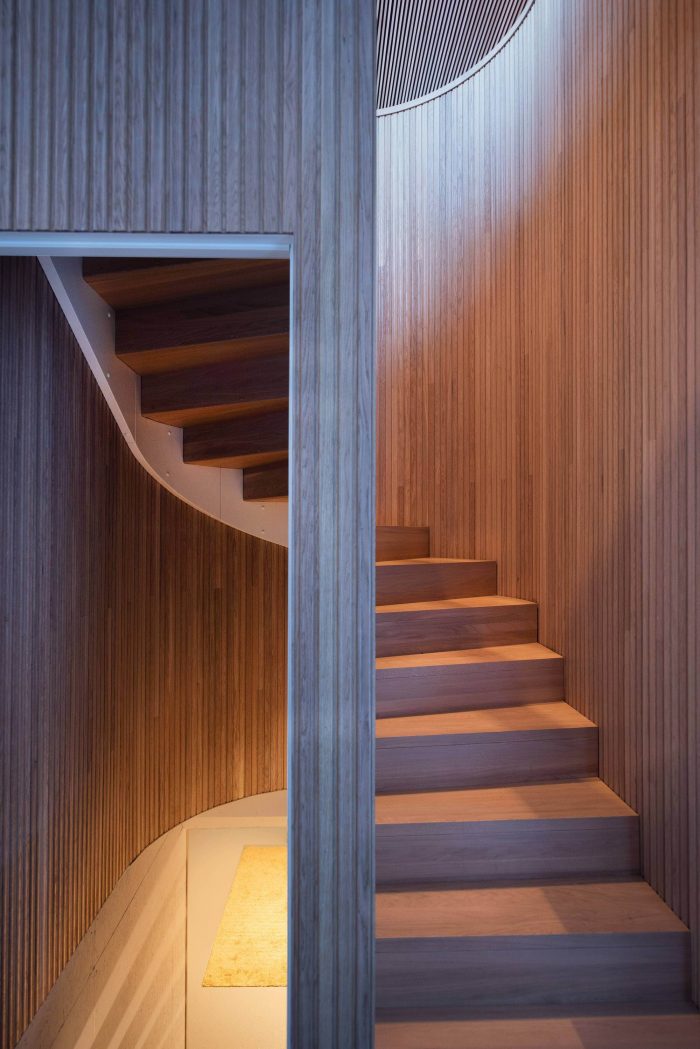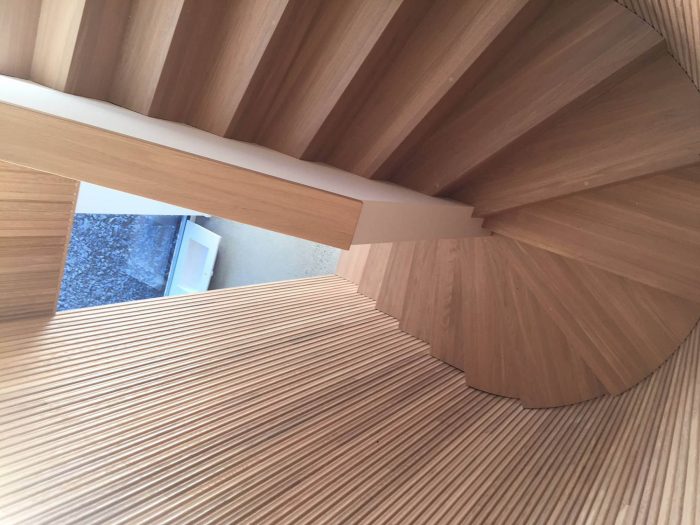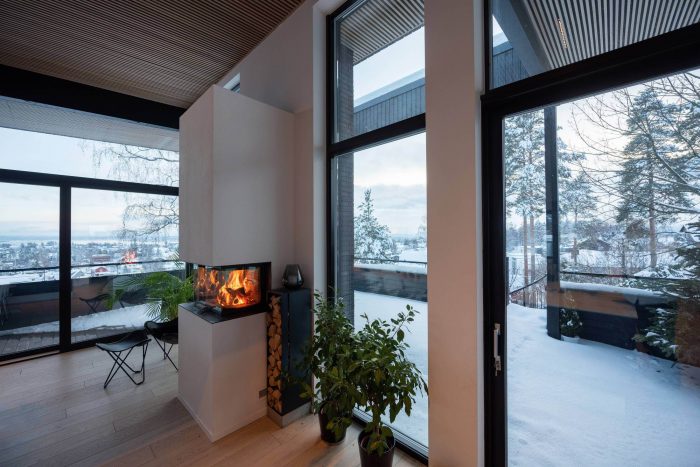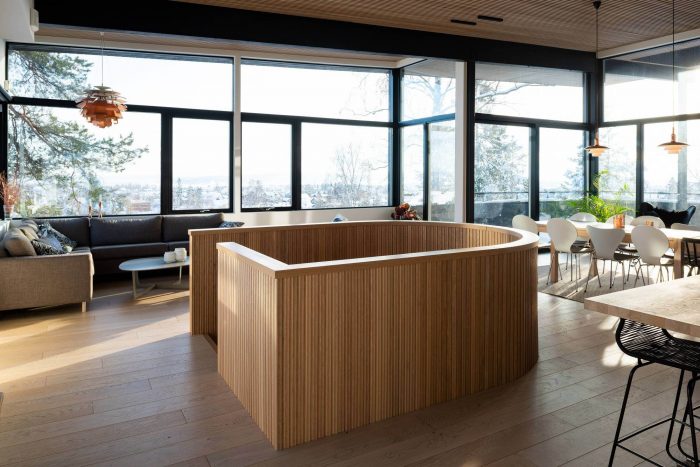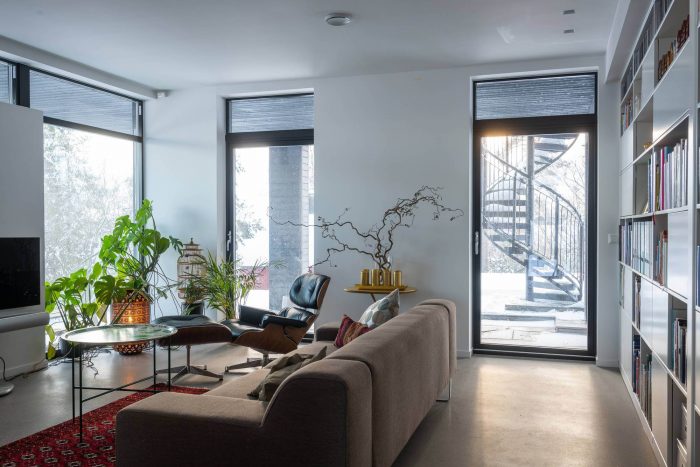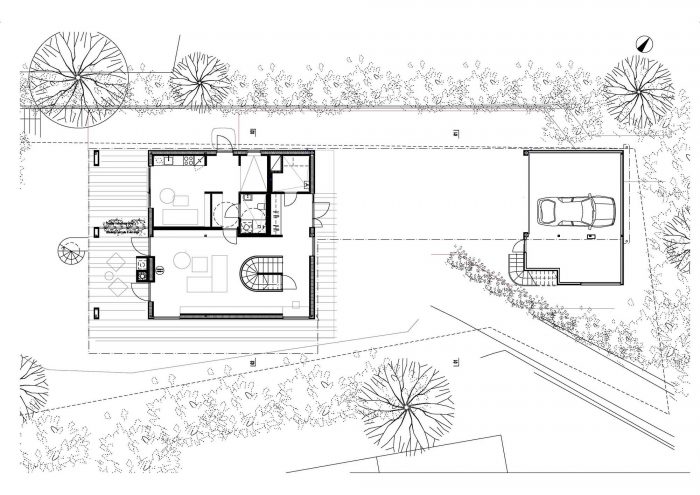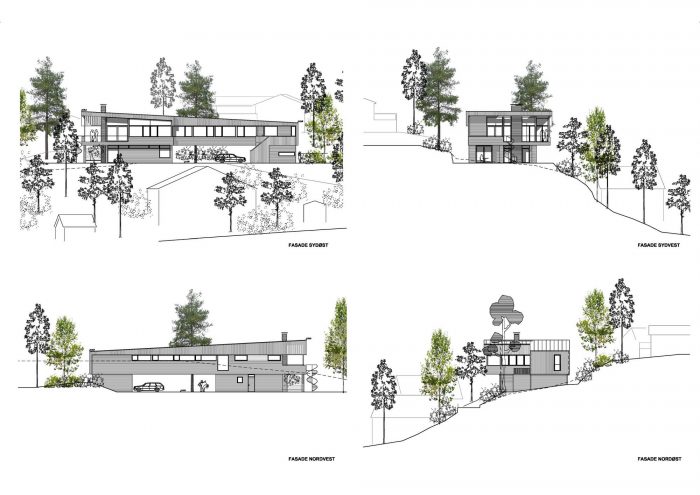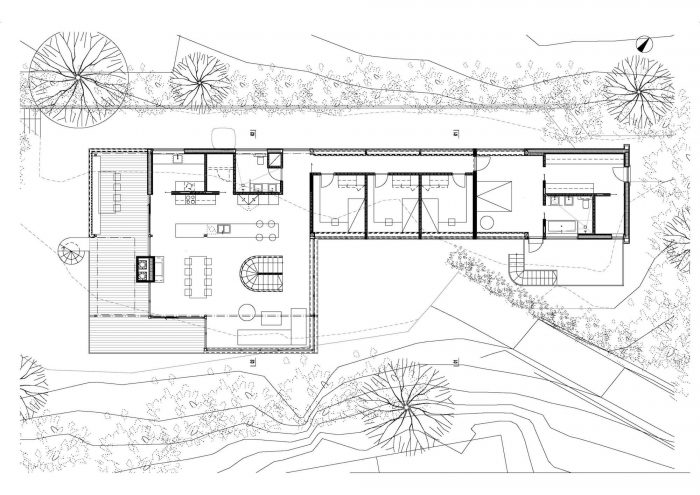“Fjeldhøi别墅 “是位于挪威首都奥斯陆郊外Jar地区的一处私人住宅。该物业坐落在山脊上,从早到晚都有丰沛的阳光,并能看到奥斯陆峡湾的迷人景色。老松树是该地的特色,使主要生活区有一种栖息在树梢上的感觉,同时还可以远眺奥斯陆和峡湾。该物业是该地区最古老的物业之一,最初是1912年建造的 “瑞士式 “房屋。老房子的技术条件非常差,修复的任务似乎是徒劳的。因此,它被拆掉了,但业主提供了便利,因此,部分部件被捐赠给同一时期的房屋业主–从而确保了一些建筑部件的再利用,如门、窗、铰链等。
«Villa Fjeldhøi» is a private home in the area of Jar, just outside of the Norwegian capital Oslo. The property is situated on a ridge with bountiful sunlight from morning to evening, and a stunning view towards the Oslo-fjord. Older pine trees are characteristic of the site, giving the main living areas an experience of being perched amidst the treetops while overlooking Oslo and the fjord at a distance. The property is one of the oldest in the area, originally having been built with a “swiss style” house from 1912. The old house was in a very poor technical condition and the task of restoration seemed futile. It was consequently taken down, but the owners facilitated so parts were donated to owners of houses from the same period – thus ensuring reuse of some building parts such as doors, windows, hinges, and so forth.
新的 “Fjeldhøi别墅 “在底层的足迹与西边的原始房屋和东边的前户外棚屋和鸡舍相吻合。房子的第二层横跨这两个部分。通道和车道保持在原来的位置,只是现在二楼在车道上方有一个12米的自由跨度。这样一来,车道和入口上方就有了部分遮挡的通道。最重要的是,该方案保留了西面现有花园的大部分,以及现有的植被和树木,这些都是该地的特色。
The footprint of the new “Villa Fjeldhøi” on the ground floor coincides with the original house to the west and a former outdoor shed and henhouse towards the east. The second floor of the house spans over these two parts. The access road and driveway are maintained in their original position, only now with the second floor in a 12-meter free span above the driveway. This provides partially covered access over the driveway and entrance. Most importantly the scheme has made it possible to preserve much of the existing garden towards the west, and existing vegetation and trees that are characteristic of the site.
新的 “Fjeldhøi别墅 “的建筑表现形式是现代的,并根据具体的情况量身定做。屋顶由东向西倾斜,从而向主景、晚霞和花园开放。屋顶的倾斜也是考虑到周围东边的邻居,使建筑高度降低。这里曾经是一个独立的房产,在过去的100年里,这个地区已经变得密集起来,现在这个房产已经被住宅包围。不过,不同的相邻房屋在平面和高度上略有分歧,保证了每个物业的阳光、视野和部分隐私。
The architectural expression of the new “Villa Fjeldhøi” is contemporary and tailored to the specific situation. The roof slopes upwards from east to west, thus opening towards the main view, the evening sun, and garden. The sloping of the roof is also done to keep building heights down in consideration of surrounding neighbors to the east. Once a freestanding property, the area has become densified over the past 100 years and the property is now surrounded by homes. The different neighboring houses are however slightly diverged in plan and height, ensuring sun, view, and partial privacy for each property.
朝向花园,一楼和二楼都有部分覆盖的户外露台,包括一个户外壁炉和一个户外螺旋楼梯,也从外部连接两层楼–始终保证从室内到室外的便捷通道。奥斯陆地区位于北纬56度。因此,挪威的夏季和冬季在温度上,尤其是在日照方面有着极大的反差。因此,利用日光对我们来说是最基本的,同时也是在室内和室外之间建立灵活联系的基础。因此,延长了户外活动的可能性,并创造了一种与周围环境紧密相连、易于开放的室内空间感。
Towards the garden, there are partially covered outdoor terraces on both the ground floor and second floor, including an outdoor fireplace and an outdoor spiral staircase connecting the two floors also externally – always ensuring easy access from the interior to the exterior. The Oslo-area is located at 56 degrees latitude. Norway, therefore, has extreme contrasts between the summer and winter, in temperature and especially in terms of daylight. Working with daylight is therefore fundamental for us, as well as creating flexible connections between the interior and exterior. Thus, prolonging the possibility to stay outdoors, and creating a sense of interior spaces that are strongly connected and easily opened to the surroundings.
主体结构为木材框架,部分使用层压木材和钢材。底层采用抛光混凝土地面。生活区内部采用橡木地板和天花板。主楼梯采用橡木建造,具有触感的雕塑造型。
The main construction is timber framing, with some use of laminated timber and steel. The ground floor has polished concrete floors. The interiors of the living area have oak floors and a ceiling. The main stairway has a tactile, sculptural form, built in oak.
建筑师:MORFEUS arkitekter
面积:280平方米
年份:2020年
摄影:Finn Ståle Felberg
牵头建筑师:Caroline Støvring, Cecilie Wille
国家:挪威
Architects: MORFEUS arkitekter
Area: 280 m²
Year: 2020
Photographs: Finn Ståle Felberg
Lead Architects:Caroline Støvring, Cecilie Wille
Country:Norway

